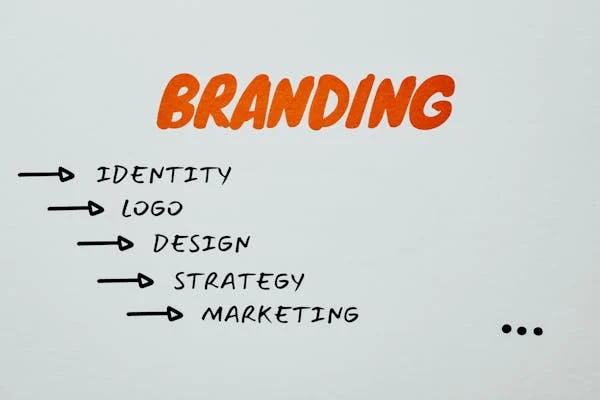Explore the world of branding techniques in this detailed guide. Discover how to leverage branding strategies to enhance your business’s identity and reputation.
In today’s fiercely competitive market, establishing a strong brand presence is essential for businesses to stand out and succeed. Effective branding techniques not only differentiate a company from its competitors but also foster customer loyalty and trust. This comprehensive guide delves deep into the intricacies of branding, offering valuable insights and strategies to elevate your brand to new heights.
Branding techniques encompass a wide array of strategies aimed at creating a distinct identity and perception for a business or product. From crafting a compelling brand story to designing memorable visual elements, effective branding techniques play a pivotal role in shaping consumer perceptions and driving brand affinity.

Understanding Brand Identity
At the core of branding lies the concept of brand identity, which encompasses the unique values, personality, and attributes that distinguish a brand from its competitors. Establishing a strong brand identity involves defining key elements such as brand mission, vision, and values, which serve as the foundation for all branding efforts.
Crafting a Compelling Brand Story
A compelling brand story serves as the narrative backbone of a brand, resonating with consumers on an emotional level and forging deeper connections. By articulating the brand’s journey, values, and purpose, a well-crafted brand story captivates audiences and reinforces brand authenticity.
Designing Memorable Visual Assets
Visual elements such as logos, color schemes, and typography are integral components of brand identity, serving as the visual representation of a brand’s values and personality. Thoughtful design choices and consistent branding across all touchpoints are crucial for creating a cohesive and memorable brand experience.
Building Brand Consistency
Consistency is key to effective branding, as it reinforces brand recognition and fosters trust and credibility among consumers. Maintaining consistency across all brand elements, from messaging and visual identity to customer interactions, ensures a unified brand image and reinforces brand authenticity.
Harnessing the Power of Brand Communication
Effective brand communication involves strategically conveying the brand’s message and values through various channels and touchpoints. Whether through advertising, social media, or public relations, clear and consistent communication strengthens brand positioning and fosters meaningful connections with target audiences.
Creating Brand Differentiation
In a crowded marketplace, standing out from competitors is essential for brand success. By identifying and highlighting unique selling points and value propositions, brands can carve out a distinct niche and attract loyal customers who resonate with their offerings.
Measuring Brand Performance
Tracking and evaluating brand performance metrics is essential for assessing the effectiveness of branding efforts and identifying areas for improvement. Key performance indicators (KPIs) such as brand awareness, brand sentiment, and customer engagement provide valuable insights into the overall health and perception of the brand.
Adapting to Market Trends
In today’s rapidly evolving business landscape, staying abreast of market trends and consumer preferences is imperative for brand relevance and longevity. By embracing innovation and adapting to changing market dynamics, brands can remain agile and responsive to evolving consumer needs.
The Future of Branding
As technology continues to reshape the marketing landscape, the future of branding holds boundless possibilities. From immersive brand experiences to personalized messaging, brands must embrace innovation and leverage emerging technologies to stay ahead of the curve and engage audiences in meaningful ways.

Advantages of Branding Techniques:
1. Enhanced Recognition and Recall:
- Advantage: Strong branding increases brand recognition, making it easier for customers to recall and identify the brand among competitors.
- Example: The iconic Nike swoosh logo is instantly recognizable worldwide, thanks to Nike’s consistent branding efforts.
2. Building Trust and Credibility:
- Advantage: Effective branding builds trust and credibility with consumers, as consistent branding signals reliability and quality.
- Example: Brands like Coca-Cola have built a strong reputation over the years, fostering trust among consumers through consistent branding.
3. Differentiation from Competitors:
- Advantage: Strategic branding helps differentiate a brand from competitors by highlighting unique selling points and value propositions.
- Example: Apple’s branding emphasizes innovation and sleek design, setting it apart from other technology companies in the market.
4. Loyalty and Repeat Business:
- Advantage: Strong branding cultivates customer loyalty and encourages repeat business, as customers develop an emotional connection with the brand.
- Example: Starbucks’ loyal customer base is drawn not only to its quality coffee but also to the unique Starbucks experience and brand culture.
5. Premium Pricing Potential:
- Advantage: Well-established brands can command premium prices for their products or services, as consumers perceive higher value and prestige associated with the brand.
- Example: Luxury brands like Rolex can charge premium prices for their watches due to their strong brand reputation and perceived exclusivity.
Disadvantages of Branding Techniques:
1. High Initial Investment:
- Disadvantage: Building a strong brand requires significant upfront investment in marketing, advertising, and brand development, which may pose challenges for startups and small businesses with limited resources.
- Example: Launching a new brand campaign or rebranding initiative can be costly, especially for businesses operating on tight budgets.
2. Risk of Brand Dilution:
- Disadvantage: Inconsistent branding or dilution of brand identity over time can erode consumer trust and weaken brand equity, leading to confusion and loss of market share.
- Example: Brands that expand too rapidly or diversify into unrelated product categories risk diluting their core brand identity and losing relevance with consumers.
3. Negative Public Perception:
- Disadvantage: Branding efforts can backfire if poorly executed or if the brand is associated with negative publicity or controversies, damaging the brand’s reputation and consumer trust.
- Example: Companies embroiled in scandals or ethical controversies may face backlash from consumers, tarnishing their brand image and impacting sales.
4. Difficulty in Measuring ROI:
- Disadvantage: Unlike tangible assets, the return on investment (ROI) of branding efforts can be challenging to quantify, making it difficult for businesses to assess the effectiveness of their branding strategies.
- Example: While increased brand awareness and customer loyalty are desirable outcomes of branding, measuring their direct impact on sales or profitability can be elusive.
5. Market Saturation and Competition:
- Disadvantage: In saturated markets with intense competition, it can be challenging for brands to stand out and capture consumer attention, requiring continuous innovation and adaptation to maintain relevance.
- Example: Fast-fashion retailers face fierce competition, requiring constant rebranding and marketing efforts to differentiate themselves and attract customers amidst a crowded marketplace.
In conclusion, while branding techniques offer numerous advantages in building a strong brand identity and fostering consumer loyalty, businesses must also navigate potential pitfalls such as high initial investment, brand dilution, and negative public perception to ensure long-term success in today’s competitive landscape.
FAQs (Frequently Asked Questions)
Q: What are some common branding mistakes to avoid?
A: Common branding mistakes include inconsistency in messaging, neglecting customer feedback, and failing to differentiate from competitors.
Q: How can small businesses build a strong brand on a limited budget?
A: Small businesses can build a strong brand by focusing on niche markets, leveraging social media for brand awareness, and prioritizing customer experience.
Q: What role does storytelling play in branding?
A: Storytelling is a powerful branding tool that helps create emotional connections with audiences, humanize the brand, and differentiate from competitors.
Q: How important is brand consistency across different marketing channels?
A: Brand consistency is crucial across all marketing channels to reinforce brand identity, enhance brand recognition, and build trust with consumers.
Q: What metrics should businesses track to measure brand performance?
A: Businesses should track metrics such as brand awareness, brand sentiment, customer satisfaction, and brand loyalty to measure brand performance effectively.
Q: How can brands adapt to changing consumer preferences and market trends?
A: Brands can adapt to changing trends by conducting market research, staying agile, embracing innovation, and listening to customer feedback.
Conclusion
In today’s dynamic business landscape, effective branding techniques are more important than ever for building a strong and resilient brand. By understanding the core principles of branding and implementing strategic tactics, businesses can elevate their brand presence, foster customer loyalty, and drive long-term success.






